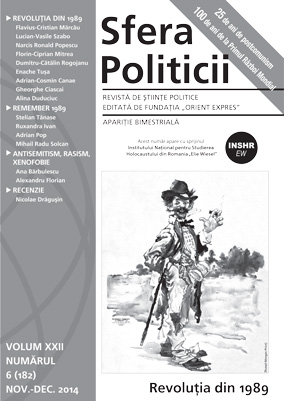O analiză psihoistorică. Gulagul și Revoluţia română din 1989
A psychohistorical analysis. Gulag and the Romanian Revolution of 1989
Author(s): Dumitru-Cătălin RogojanuSubject(s): Politics / Political Sciences
Published by: Fundaţia »Societatea Civilă« (FSC)
Keywords: psychohistory; Gulag; Romanian Revolution of 1989; conspiracy of silence; paternal authority; crowd psychology
Summary/Abstract: The direction of the current study is the analysis of the Gulag and Romanian Revolution of 1989 using a psychohistorical investigation, which attempts to provide a plausible psychological explanation of these two events.The relationship between the communist prison space and the situation in '89 can be exploited from other perspectives that emphasize different and nuanced interpretations which can radically change the old historical vision, which focused on documents (archives) justifying the official history of power. The conspiratorial silence of prisoners, meaning that inability to confess the suffering in the period before 1989, „exploded“ in the revolution through aggressive manifestations in Timișoara, Bucharest and other cities in the country. In the end we can say that the Revolution was that long-expected time for Romanians to express their negative energies, anguish, disappointment in the paternal authority represented by Nicolae Ceaușescu. In 1989, the soul of the crowd (Gustave Le Bon) broke loose after a long period of obedience and humiliation in communist prisons, but also in the huge camp: Romania.
Journal: Sfera Politicii
- Issue Year: XXII/2014
- Issue No: 182
- Page Range: 38-43
- Page Count: 6
- Language: Romanian

